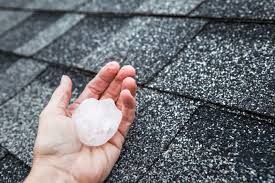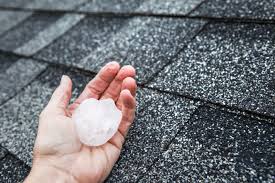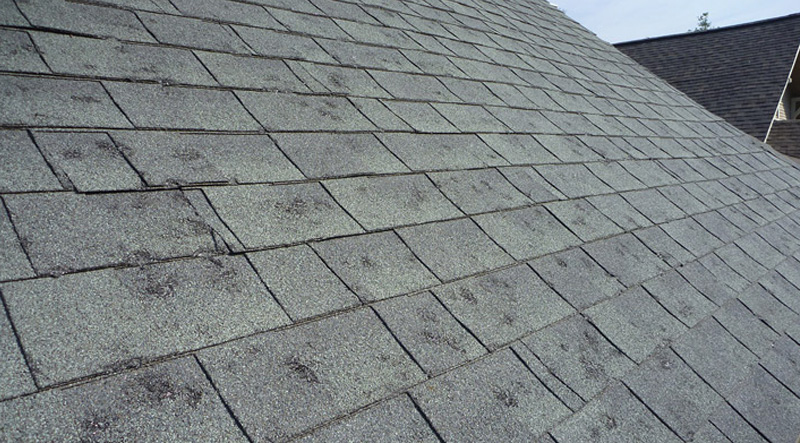It can be scary to wait out the big flashes of the lighting, and loud crashing thunder of a big storm. But sometimes, the aftermath of a storm can be even scarier when you discover damage to your property. Hail damage may not be the worst form of storm damage, but there are things you should know about looking for and dealing with any hail damage to your roof.
How to Spot Hail Damage
Checking for hail damage from the ground:
The night after a storm, it can help to take a walk around your property and suss out any potential damage. With multi-story homes, it can be hard to see the condition of your roof without a ladder. Ask yourself these questions as you examine your home and yard from the ground level:
- Are there dents in your gutters?
- Are there any dents or dings on your windows or siding?
- Is there any damage to outdoor air conditioners?
- Are there any chips and dents on wooden or painted surfaces, such as your deck?
If you answer yes to any of these questions, you may be dealing with hail damage.
Checking for hail damage at roof level:
Hail damage will look different depending on the roofing material you have protecting your home. Keep reading to find out more about what hail damage might look like on your specific roof type.
Asphalt and composition shingles:
Hail hits will be black in color and soft to the touch
- Loss of granules, potential for exposed felt
- Asphalt and/or mat may appear shiny
Wood shingles:
- Splits in the shingles that are brown/orange in color,
- Splits in the shingles may have sharp corners and edges with little or no deterioration at the edges
- Impact marks may appear around the edges of wood shingles
Clay or slate:
- Cracks, or hairline cracks
- Gauges in the tile
- Chips to the edges of the tile
What are the Different Ways Hail Can Damage a Roof?
In addition to the type of roof on your home, hail damage can also depend on the severity of the hail storm. Hail size, hail density, hail shape, and the velocity and angle of its fall all play a role in a hail storm’s impact on your property. Regardless, too, of roof type, age, or quality of construction, a hail-damaged roof will tend to fail prematurely.
Hail damage to roofs can be either functional or cosmetic. With an asphalt roof, the full effect of the damage may not be apparent until up to a year after the hailstorm. Over time, loosened granules in the asphalt will fall away, leaving the shingles exposed and vulnerable to the effects of storms, wind, and harsh UV rays from the sun. The shingles have now become compromised, and may even lead to mold or leakages. This is just one example of worst-case scenario functional hail damage to your roof.
Hail Damage to Gutters and Spouts
After a big storm, another type of damage to be cognizant of is any potential damage to gutters and spouts. Hail-damaged gutters and spouts will appear dented or bent. Depending on the size of the hailstones and severity of the storm, hail can even cause cracks in your gutters and downspouts, which may lead to worse drainage issues.
How to Work with Insurance Companies
Typically, homeowners insurance will include coverage for roof damage from hail. Usually, claims should be filed within a year of finding damage, and you should have your roof inspected as soon as you suspect you may have hail or storm damage to your property. It is important that you have a contractor or roofing professional inspect your home since your insurance adjuster will be looking for reasons to not replace or repair your roof. Having a contractor’s professional assessment will help you get the services and coverage you need when it comes to keeping your roof in good shape.
If you encounter storm or hail damage to your roof, you can call CoMitted 365 for a quote, for repair services, and even for help navigating the insurance claims process.




 Hail hits will be black in color and soft to the touch
Hail hits will be black in color and soft to the touch